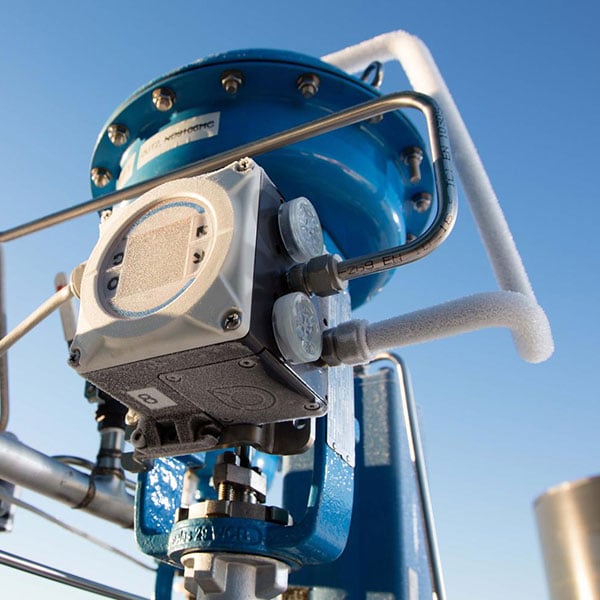How Control Valves Influence Energy Efficiency in Industrial Settings
How Control Valves Influence Energy Efficiency in Industrial Settings
Blog Article

Maximize Power Financial Savings and Comfort With Advanced Structure Automation Controls
In the world of modern design and center monitoring, the combination of advanced building automation controls stands as a crucial development. By using the power of automation, structures can adjust, respond, and advance in ways that were once unimaginable.
Power Performance Advantages
Energy performance benefits can significantly decrease energy usage and operational expenses in structures. By implementing energy-efficient methods and technologies, structure proprietors and drivers can achieve substantial financial savings while additionally adding to environmental sustainability. Among the key benefits of improving power effectiveness in structures is the decrease of energy expenses. Energy-efficient systems, such as sophisticated building automation controls, can enhance the usage of resources like lighting, cooling, and heating, bring about reduced energy costs with time.
Additionally, boosted energy performance can extend the lifespan of structure devices and systems. By operating extra efficiently, a/c systems, light, and various other building elements experience much less deterioration, causing lowered maintenance and replacement expenses. In addition, energy-efficient buildings frequently command greater property values and rental prices, offering long-term economic benefits to owners.
Additionally, power efficiency can improve occupant convenience and efficiency. Properly regulated interior settings with ideal lighting and thermal conditions produce an even more helpful and pleasant office, leading to improved worker complete satisfaction and efficiency. In general, the power effectiveness advantages related to innovative structure automation controls are diverse, including price financial savings, environmental stewardship, and resident wellness.
Improved Convenience Control
Enhancing convenience control in building atmospheres calls for an innovative integration of sophisticated automation systems for optimal resident well-being. By using advanced building automation controls, facilities can customize the interior setting to meet the particular requirements and preferences of occupants. These systems make it possible for accurate regulation of air flow, lighting, and temperature level, producing a effective and comfy ambience. Occupant contentment and performance are carefully connected to thermal convenience, making it vital to have systems in position that can adjust to changing problems in real-time.
Enhanced comfort control goes beyond basic temperature level adjustments. It consists of features such as tailored settings, tenancy sensors, and all-natural light utilization to create a dynamic and responsive environment. By including these advanced controls, buildings can not just enhance convenience however also enhance power performance by maximizing system operations based upon actual occupancy and usage patterns. Inevitably, prioritizing resident convenience via advanced automation systems causes an extra delightful and much healthier interior environment.
Functional Performance Improvements

Furthermore, the implementation of real-time surveillance and analytics tools makes it possible for structure drivers to determine energy inadequacies and operational anomalies promptly. By constantly checking energy use patterns and system performance metrics, changes can be made in real-time to optimize power consumption and guarantee peak operational performance. control valves. Additionally, including demand action techniques right into building automation controls can further enhance operational performance by dynamically adjusting energy usage based upon grid problems and pricing signals
Indoor Climate Optimization
Reliable interior climate optimization view is an essential facet of building automation controls, making certain owners' comfort and health while maximizing energy cost savings. By utilizing advanced sensors and controls, constructing automation systems can continually readjust and monitor temperature, humidity degrees, air high quality, and ventilation to produce an ideal indoor atmosphere. Keeping regular and comfy problems not just boosts occupant complete satisfaction however likewise improves performance and general wellness.
Interior environment optimization likewise plays a crucial function in power effectiveness. By fine-tuning cooling, ventilation, and home heating systems based upon real-time data and occupancy patterns, developing automation controls can substantially minimize energy usage - control valves. For example, carrying out approaches such as demand-controlled ventilation and thermal zoning can help lessen power waste while making sure that each area of the structure gets the essential conditioning.

Lasting Environment Production
Building automation manages not only maximize indoor environment conditions for energy performance and resident convenience but additionally lay the foundation for developing a sustainable atmosphere via tactical monitoring of resources and systems. By incorporating sophisticated structure automation technologies, such as sensors, actuators, and smart software program, centers can adjust and keep an eye on power usage in real-time to lessen waste more info here and minimize their carbon footprint. These systems allow anticipating upkeep, identifying potential concerns prior to they escalate and optimizing devices efficiency to improve longevity and efficiency.
Additionally, lasting environment production prolongs past power management to include Homepage water conservation, waste reduction, and indoor air quality enhancement. Building automation controls can control water usage, discover leakages, and make certain appropriate waste disposal techniques, adding to total sustainability efforts. Furthermore, by monitoring and regulating air flow and purification systems, these innovations enhance occupant health and efficiency while lowering power usage connected with cooling and heating procedures.
Verdict
Finally, progressed building automation controls deal considerable advantages in terms of energy financial savings, convenience control, operational efficiency, indoor climate optimization, and creating a lasting atmosphere. By carrying out these controls, buildings can achieve optimum efficiency while decreasing energy intake and improving occupant convenience. It is obvious that using innovative automation modern technology is vital in improving building performance and creating a much more lasting future.
Power efficiency advantages can substantially decrease power intake and functional costs in structures. Overall, the power performance advantages associated with sophisticated structure automation controls are multifaceted, incorporating price savings, ecological stewardship, and occupant health.
Furthermore, including need feedback approaches right into building automation controls can further boost operational effectiveness by dynamically changing power usage based on grid conditions and pricing signals.
Building automation regulates not just enhance interior environment problems for energy efficiency and resident convenience however likewise lay the foundation for creating a sustainable setting with critical administration of sources and systems.In conclusion, progressed structure automation regulates offer significant benefits in terms of power savings, comfort control, functional efficiency, interior climate optimization, and producing a lasting setting.
Report this page